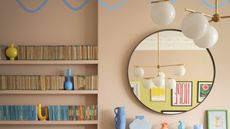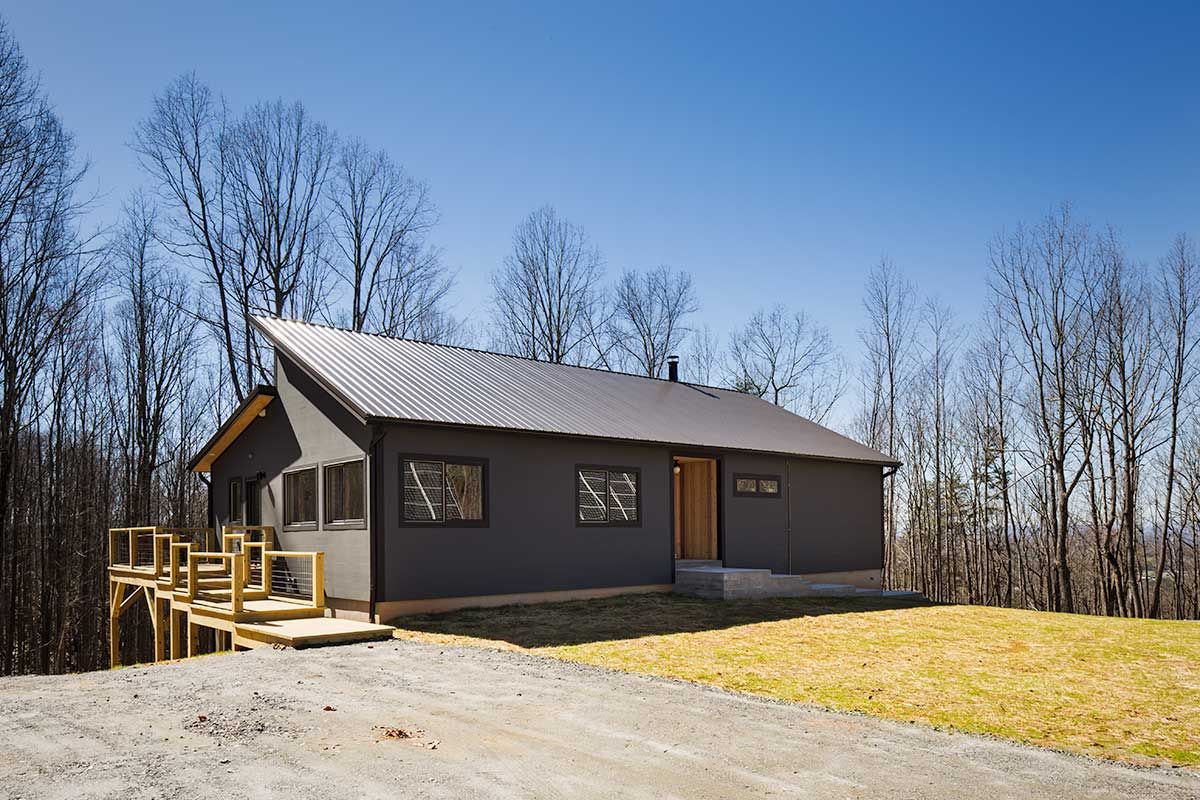

Heard the buzz about prefabricated homes and weighing up whether one of these could be the right option as your home? There certainly are benefits that come with prefab homes, but it’s important to be aware of how they differ from homes built on site in the traditional manner so that you can make an informed decision.
But perhaps your first question is what are prefab homes, and here we’ll explain the term along with the types of home that fall under the umbrella of prefabricated (or prefab) homes.
We’ve got advice from the experts for you, too, so you can decide whether to opt for a prefab or a stick-built home, and what’s involved if you choose the former, plus the lowdown on prefab home prices.
What are prefabricated homes?
A prefabricated or prefab home is one constructed from components made in advance in a factory then transported in sections to your building site for assembly. Traditional stick-built homes, by comparison, involve bringing materials like lumber to the site in order for the house to be built piece by piece.
With a prefab home, often what’s made in the factory are standard sections although that’s not to say that what you’ll end up with is a home without architectural interest. Prefab homes can resemble traditional site-built homes, or have statement contemporary credentials.
- Get clued up on self build homes too.
What is the difference between prefab and modular homes?
If you’ve spent any time considering prefab homes, you’ve probably also come across the term ‘modular homes’, and you may be wondering what distinguishes the two – particularly because you’ll often find that the terms are used interchangeably.
However, it’s useful to separate them for clarity, so what is the difference between prefabricated homes and a modular home? The answer is that modular homes are actually a subset of the category prefabricated homes. In other words, a modular home is a prefabricated home, but one with particular characteristics.
Chris McGuire, founder of Real Estate Exam Ninja, explains: ‘A prefabricated home, or prefab for short, refers to a house in which one or more parts are previously constructed at a factory and then shipped to the site where they will be assembled.
‘The prefabricated parts of the house can range from individual walls to fully assembled rooms with plumbing and wiring pre-installed. The latter is the case for modular homes, where the blocks or modules are usually specific spaces or rooms of a house and are almost entirely pre-made before getting to the construction site. Thus, modular homes can be considered a subtype of prefabricated homes.’
Note that manufactured homes are also prefabricated homes. However, a manufactured home has a wheeled chassis. Factory built, one of these is then transported to the site as a single or more than one section.
Is prefab cheaper than building?
You might be attracted to owning a prefab home with the idea that it’s cheaper than a conventional stick-built home, and it’s true that it can be. There are a few reasons why this might be the case.
‘They can be constructed faster because the factory workers have access to specialized tools and equipment, don’t have to deal with inclement weather, and have less exposure to supplier and labor delays, etc,’ says Aaron Burch, owner of DiscoverContainers.
The construction workers can do their jobs efficiently in a factory, while the factories can buy construction materials at scale, he adds.
However, overall, the answer to the question is prefab cheaper than building may not be entirely clear cut. Burch advises: ‘Oftentimes prefabricated construction is cheaper than traditional building methods.
‘However, you have to ensure you’re comparing apples to apples in order to see potential savings. Homes with different designs, sizes, interior finish out quality, etc make it difficult to compare.’
How much do prefab homes cost?
If you’re tempted by the idea of one of these homes, and aware that there is the potential for spending less, your next question is likely to be how much do prefab homes cost.
This is where it gets more complex, with several companies currently offering prefab homes at different price points. The main difference in price is due to the different materials used.
A traditional timber frame home could cost you anything from $200 per square foot, while those constructed with Structural Insulated Panels (SIPs) cost as little as $20 to $30 per square foot. Oak frame homes can be the most expensive depending on local rates in the prefab market, costing $270 upwards per square foot.
The total finished cost of a prefab home with installation is around $100 to $200 per square foot, according to HomeAdvisor.
Next, there are installation and project management costs to consider, as well as connecting up the home to water mains and electricity. This is why comparing quotes from different companies is so important – and asking them how much of the building/project management they can do for you. There is a huge difference between, for instance, a self-build flatpack home, and a 'turnkey' home – where the company do all of the building and installation work for you – from German prefab luxury Huf Haus for exampke, which could cost you around $500 or $600 per square foot.
When getting quotes, be clear about what’s included so you can be sure you are able to compare the finished costs of each home for which you get a quote and not just the base prices.
Be aware also that other costs may impact your final bill including land clearance, the foundation, a gas line, and so on.
So, a prefab or self build home will not necessarily be cheaper initially, especially once the price of land has been taken account. What a prefab can offer you, though, is significantly lower energy bills, and a lot of freedom when it comes to the design of your home.
Where do I start if I want a prefab home?
You will discover there are plenty of options if you decide a prefab home might be the best choice for you. ‘There are numerous companies that build and sell prefab homes,’ says Aaron Burch.
‘The best place to start is researching some online with floor plans you find interesting, and if possible visiting a constructed model in person, or even taking a “field trip” to one of their factories. Ultimately, you want to ensure you find a design you love and a factory that inspires confidence in you that they can build it to a high quality standard.’
Are prefab homes worth it?
A prefab home could be a great option that’s worth considering as an alternative to a stick-built home.
‘For most people, prefab houses can definitely be worth it,’ says Aaron Burch. ‘They offer the potential of cost, speed, and quality benefits. And it’s nearly impossible to identify a prefab home after it is finished.’
There are other potential advantages to a prefab home. ‘They are highly energy efficient,’ says Matt Ward, realtor and team lead at The Matt Ward Group.
‘The tight seams and efficient windows can keep the heat inside and thus reduce your energy bills. The tight construction also helps to fight dangerous natural disasters. So, considering the major perspectives, prefab houses are certainly worth it.’
Do prefab homes last?
You might have concerns that a prefab home won’t last in the same way as a stick-built home.
‘This certainly depends on the materials and quality assurance program used by the manufacturer,’ says Aaron Burch.
‘However, there is nothing that prevents prefab homes, by their nature, from lasting any less time than traditional homes. On the contrary, because their factory build location allows for things like greater quality oversight, specialization of labor, and uniformity of details, prefab homes often have better craftsmanship that should lead to longer lasting homes.’
But, just as with a conventionally built home, you need to play your part. ‘Keep up with maintenance and repairs, which won’t be too costly, and you can have a prefab home lasting three generations,’ says Don Adams, general manager at Regional Foundation Repair.
Join our newsletter
Get small space home decor ideas, celeb inspiration, DIY tips and more, straight to your inbox!

Sarah is a freelance journalist and editor writing for websites, national newspapers, and magazines. She’s spent most of her journalistic career specialising in homes – long enough to see fridges become smart, decorating fashions embrace both minimalism and maximalism, and interiors that blur the indoor/outdoor link become a must-have. She loves testing the latest home appliances, revealing the trends in furnishings and fittings for every room, and investigating the benefits, costs and practicalities of home improvement. It's no big surprise that she likes to put what she writes about into practice, and is a serial house revamper. For Realhomes.com, Sarah reviews coffee machines and vacuum cleaners, taking them through their paces at home to give us an honest, real life review and comparison of every model.
-
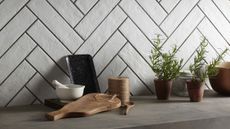 This interiors trend could put buyers off, according to a realtor
This interiors trend could put buyers off, according to a realtorBold tiles can deter buyers, warns Juliette Hohnen
By Millie Hurst Published
-
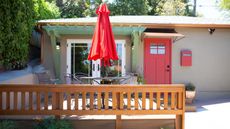 Move over tiny homes, the US is seeing a sharp rise in 'granny pods'
Move over tiny homes, the US is seeing a sharp rise in 'granny pods'There's been an explosion of ADUs since mid-2020
By Millie Hurst Published
-
 This Californian zip code has been named the most expensive in the US
This Californian zip code has been named the most expensive in the USThis ultra-desirable postal code has held its position in the top spot for the fifth year running
By Millie Hurst Published
-
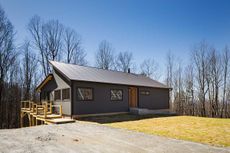 Manufactured homes vs. modular homes – the main differences
Manufactured homes vs. modular homes – the main differencesIn the matchup of manufactured homes vs. modular homes how do the two choices rate? Here’s the answer
By Sarah Warwick Published
-
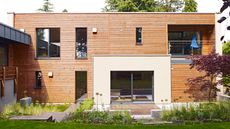 What are modular homes and what do they cost? We have the lowdown
What are modular homes and what do they cost? We have the lowdownModular homes can be a great alternative to traditional site-built homes, and our guide will answer your questions
By Sarah Warwick Last updated
-
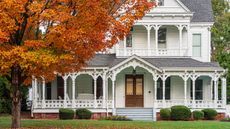 This is now the most expensive US city to rent in, according to new data
This is now the most expensive US city to rent in, according to new dataSpoiler: it's *not* San Francisco
By Millie Hurst Published
-
 Why you shouldn't move house on a Saturday - and other house-moving superstitions
Why you shouldn't move house on a Saturday - and other house-moving superstitionsGood luck to those moving this Friday 13th
By Millie Hurst Published
-
 These are the best – and worst – US cities for renters
These are the best – and worst – US cities for rentersThe most affordable, friendliest, and safest locations for renters revealed
By Anna Cottrell Published
